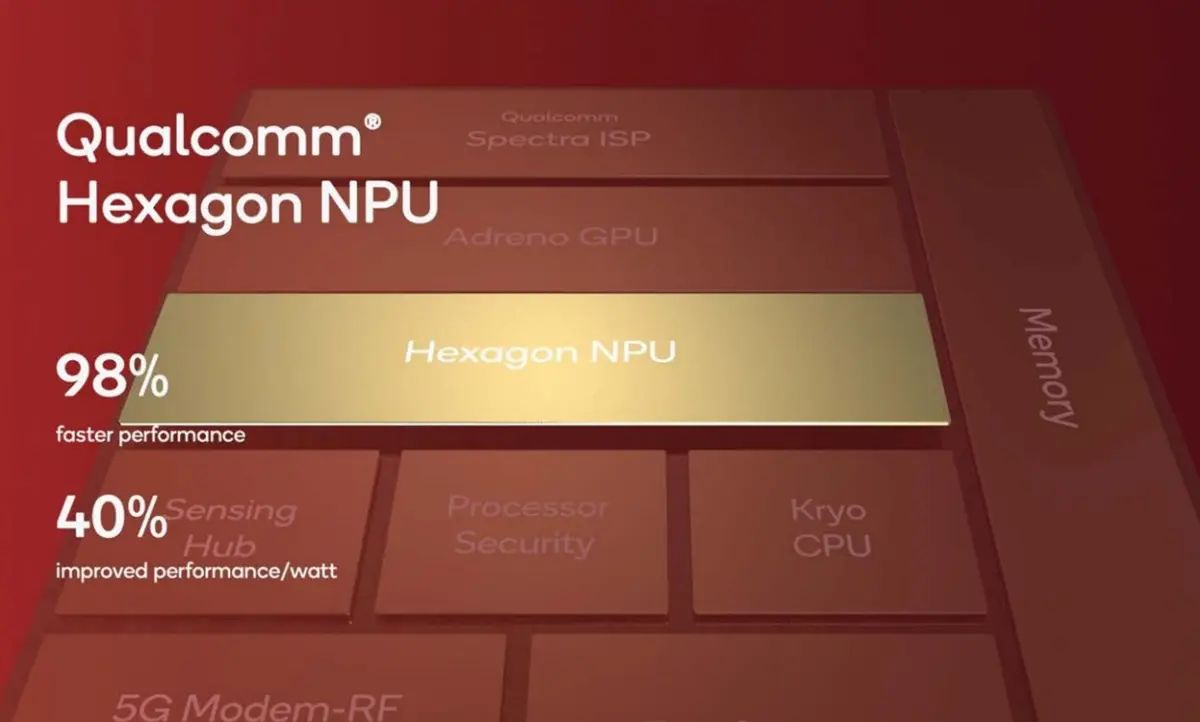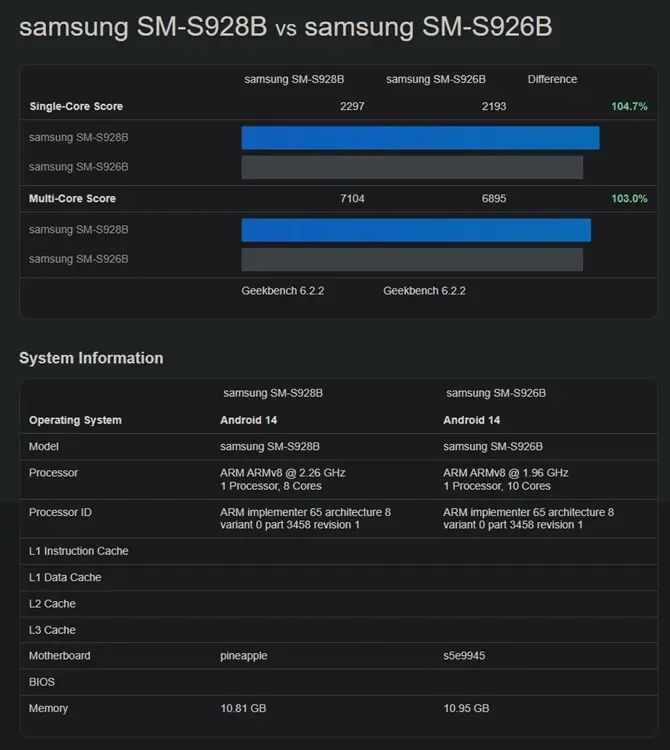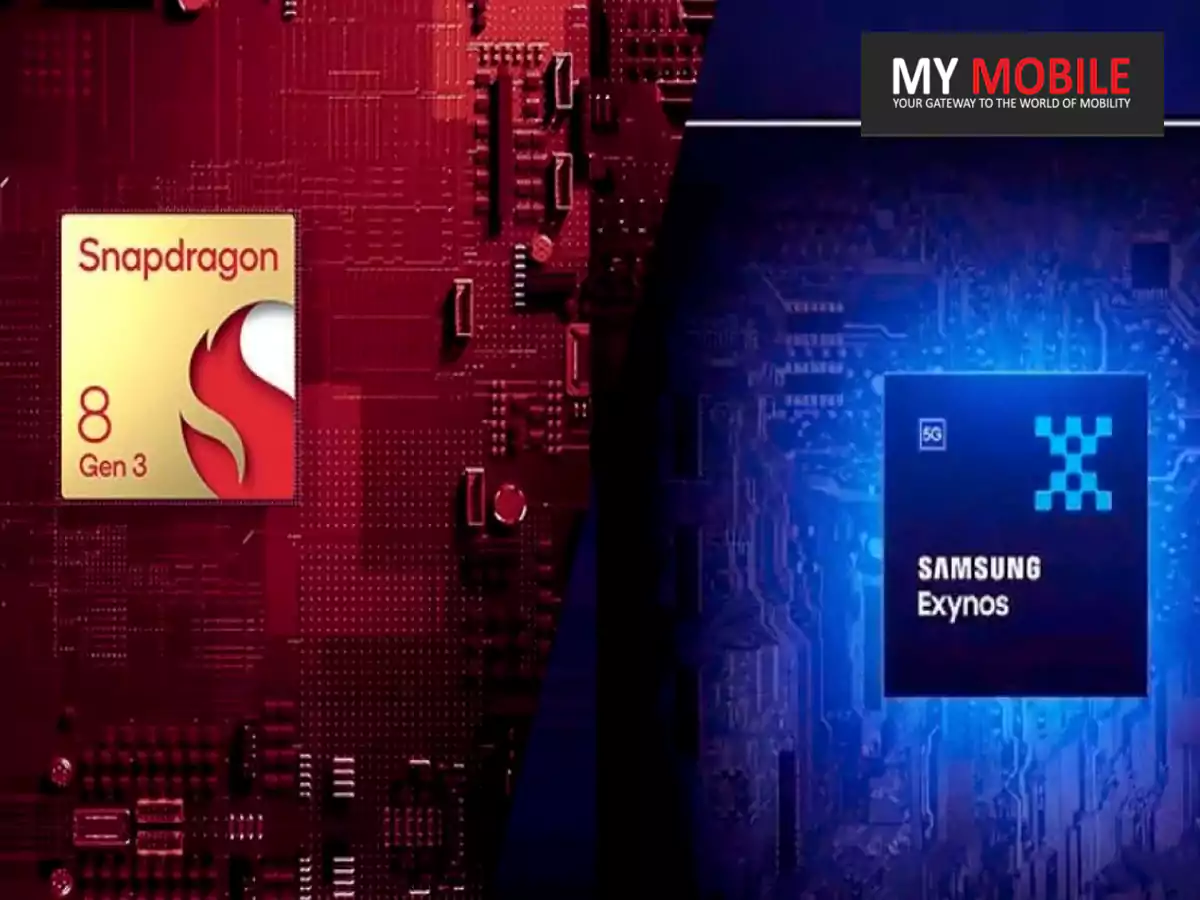Highlights
- Snapdragon 8 Gen 3 outperforms Exynos 2400 in AnTuTu and Geekbench benchmarks.
- Exynos 2400 showcases a deca-core CPU, a unique aspect compared to Snapdragon’s octa-core.
- Both chipsets excel in performance, with Snapdragon leading in overall scores.
- Snapdragon 8 Gen 3 preferred for high-frame-rate applications, Exynos 2400 for multitasking.
The recent unveiling of Samsung’s Galaxy S24 series has brought two leading chipsets into the spotlight: the Samsung Exynos 2400 and Qualcomm Snapdragon 8 Gen 3.
Now comparisons for both chipsets have come out and recent benchmarks provide a clearer picture of their respective performances.


Exynos 2400 vs. Snapdragon 8 Gen 3: Core Architectural Differences


- Exynos 2400: This chipset stands out with its deca-core CPU configuration, incorporating a higher number of cores and a higher GPU frequency, which is approximately 56% more than its counterpart. It includes a 3.2GHz Cortex-X4 core, alongside a mix of 2.9GHz and 1.95GHz Cortex-A720 cores.
- Snapdragon 8 Gen 3: In contrast, the Snapdragon features an octa-core setup. Its primary Cortex-X4 core is clocked slightly higher at 3.3GHz, supported by Cortex-A720 cores at 3.15GHz and 2.27GHz.
Display Capabilities
- The Exynos 2400 can support 4K displays at a 120Hz refresh rate, offering high-resolution visual experiences.
- The Snapdragon 8 Gen 3, while not supporting 4K, can push QHD+ screens up to a 144Hz refresh rate, making it ideal for high-frame-rate applications.
Benchmark Performance
- In AnTuTu benchmarks, the Snapdragon 8 Gen 3 leads with scores on the Galaxy S24 ranging from 1,699,940 to 1,819,945 points.
- The Exynos 2400 scores a commendable 1,639,695 points, which, although lower than the Snapdragon 8 Gen 3, is about 9% higher than the Snapdragon 8 Gen 2’s performance.
- The Snapdragon 8 Gen 3 shows its prowess in Geekbench 6, with a single-core score of 2,254 and a multi-core score of 7,059.
- The Exynos 2400, while slightly trailing, posts a competitive single-core score of 2,106 and a multi-core score of 6,757, showcasing its capabilities in handling intensive tasks.
User Implications and Choice
The Snapdragon 8 Gen 3 appears to have an edge in raw performance, particularly noticeable in benchmark testing.
However, the Exynos 2400’s deca-core architecture and improved performance over its predecessor demonstrate significant advancements.
For consumers, this means a choice between two high-performance chips, each with its unique strengths.
Those prioritizing higher frame rates and gaming might lean towards the Snapdragon 8 Gen 3, while users looking for robust multitasking capabilities might find the Exynos 2400 more appealing.
SAMSUNG GALAXY S24 ULTRA SPECIFICATIONS
Key Specs
| RAM | 8 GB |
| Processor | Samsung Exynos 2200 |
| Rear Camera | 200 MP + 12 MP + 10 MP + 10 MP |
| Front Camera | 32 MP |
| Battery | 5000 mAh |
| Display | 6.8 inches (17.27 cm) |
General
| Launch Date | November 23, 2023 (Unofficial) |
| Operating System | Android v12 |
| Custom UI | Samsung One UI |
Performance
| Chipset | Samsung Exynos 2200 |
| CPU | Octa core (2.8 GHz, Single core, Cortex X2 + 2.52 GHz, Tri core, Cortex A710 + 1.82 GHz, Quad core, Cortex A510) |
| Architecture | 64 bit |
| Fabrication | 4 nm |
| RAM | 8 GB |
Display
| Display Type | Dynamic AMOLED |
| Screen Size | 6.8 inches (17.27 cm) |
| Resolution | 1440 x 3200 pixels |
| Pixel Density | 516 ppi |
| Bezel-less display | Yes with punch-hole display |
| Touch Screen | Yes, Capacitive Touchscreen, Multi-touch |
Design
| Waterproof | Yes, Water resistant, IP68 |
| Ruggedness | Dust proof |
Camera
| MAIN CAMERA | ||
| Camera Setup | Quad | |
| Resolution | 200 MP, Primary Camera 12 MP, Ultra-Wide Angle Camera 10 MP , Telephoto Camera 10 MP |
|
| Autofocus | Yes | |
| OIS | Yes | |
| Flash | Yes, LED Flash | |
| Image Resolution | 15500 x 13000 Pixels | |
| Settings | Exposure compensation, ISO control | |
| Shooting Modes | Continuous Shooting High Dynamic Range mode (HDR) |
|
| Camera Features | Digital Zoom Auto Flash Face detection Touch to focus |
|
| Video Recording | 7680×4320 @ 24 fps 3840×2160 @ 30 fps |
|
| FRONT CAMERA | ||
| Camera Setup | Single | |
| Resolution | 32 MP, Primary Camera | |
Battery
| Capacity | 5000 mAh |
| Type | Li-Polymer |
| Removable | No |
| Wireless Charging | Yes |
| Quick Charging | Yes, Fast |
| USB Type-C | Yes |
Storage
| Expandable Memory | No |
| User Available Storage | Up to 128 GB |
Network & Connectivity
| SIM Slot(s) | Dual SIM, GSM+GSM |
| SIM Size | SIM1: Nano, SIM2: Nano |
| Network Support | 5G Not Supported in India, 4G Supported in India, 3G, 2G |
| VoLTE | Yes |
| SIM 1 |
4G Bands:
TD-LTE 2300(band 40)
FD-LTE 1800(band 3) 3G Bands:
UMTS 1900 / 2100 / 850 / 900 MHz
2G Bands:
GSM 1800 / 1900 / 850 / 900 MHz
GPRS:
Available
EDGE:
Available
|
| SIM 2 |
4G Bands:
TD-LTE 2300(band 40)
FD-LTE 1800(band 3) 3G Bands:
UMTS 1900 / 2100 / 850 / 900 MHz
2G Bands:
GSM 1800 / 1900 / 850 / 900 MHz
GPRS:
Available
EDGE:
Available
|
| Wi-Fi | Yes, Wi-Fi 4 (802.11 b/g/n) |
| Wi-Fi Features | Mobile Hotspot |
| Bluetooth | Yes, v5.2 |
| GPS | Yes with A-GPS |
| NFC | Yes |
| USB Connectivity | Mass storage device, USB charging |
Multimedia
| Loudspeaker | Yes |
| Audio Jack | USB Type-C |
Sensors
| Fingerprint Sensor | Yes |
| Fingerprint Sensor Position | On-screen |
| Fingerprint Sensor Type | Ultrasonic |
| Other Sensors | Light sensor, Proximity sensor, Accelerometer, Compass, Gyroscope |
FAQs
How do the Snapdragon 8 Gen 3 and Exynos 2400 compare in core configuration?
The Snapdragon 8 Gen 3 features an octa-core CPU, while the Exynos 2400 boasts a deca-core CPU, offering a higher number of cores and greater GPU frequency.
This difference plays a significant role in their respective performance capabilities.
What are the AnTuTu benchmark scores for these chipsets?
In the AnTuTu benchmark, the Snapdragon 8 Gen 3 scores range from 1,699,940 to 1,819,945 points, indicating superior performance.
The Exynos 2400 follows closely with a score of 1,639,695 points, showing robust capabilities despite being slightly lower.
How do these chipsets perform in Geekbench 6?
In Geekbench 6, the Snapdragon 8 Gen 3 leads with a single-core score of 2,254 and a multi-core score of 7,059.
The Exynos 2400 scores a single-core of 2,106 and a multi-core of 6,757, illustrating its competitive performance.
What are the display support capabilities of Snapdragon 8 Gen 3 and Exynos 2400?
The Exynos 2400 supports 4K displays at a 120Hz refresh rate, while the Snapdragon 8 Gen 3 is compatible with QHD+ screens at a 144Hz refresh rate, catering to different user preferences.
What does the combination of Exynos and Snapdragon chipsets mean for the Galaxy S24 series?
The integration of both Exynos 2400 and Snapdragon 8 Gen 3 chipsets in the Galaxy S24 series signifies a blend of Samsung’s proprietary technology with Qualcomm’s industry-leading SoC solutions.
This strategy allows Samsung to cater to different markets and preferences, offering tailored performance characteristics.
Why is Samsung opting for a dual chipset strategy for the S24 series?
Samsung’s choice to revert to a dual chipset strategy for the Galaxy S24 series allows for diversification in performance and technology offerings.
This move caters to varied regional market demands and underscores Samsung’s commitment to innovation and competition within the semiconductor industry.
Will all models of the Galaxy S24 have the same features across regions?
While core functionalities will remain consistent across the Galaxy S24 series, certain features powered by the Snapdragon 8 Gen 3 chipset, such as the ISOCELL Zoom Anyplace technology, may be exclusive to the models equipped with this particular SoC, adding a layer of regional differentiation.
What is Exynos 2400 vs Snapdragon 8 Gen 3: Geekbench 6 ?
The Exynos 2400 performed on expected lines, as is evident from the Geekbench CPU test. With a deca-core CPU on the Exynos 2400, it scored 2046 in the single-core test and 6687 in the multi-core test.
And the Snapdragon 8 Gen 3 with eight cores, scored a bit higher, thanks to the increase in peak frequencies of all cores, it gains 2228 in the single-core test and 6858 in the multi-core test.
Both the CPUs are plenty powerful, and Exynos 2400 comes close to the Snapdragon 8 Gen 3, which is quite a feat. However, with 10 CPU cores, Samsung should have scored higher in the multi-core test.
It shows that TSMC’s 4nm fabrication process is still ahead of Samsung Foundry’s 4nm LPP+ process node.
How did both chips perform on various tests ?
Genshin Impact: Both chips managed a mostly steady 60 FPS, proving their ability to handle even demanding titles. However, there was some thermal throttling which isn’t surprising considering Genshin Impact is the most demanding smartphone game.
PUBG Mobile: Both the Exynos and Snapdragon chips in the Galaxy S24 series managed to reach a consistent 90 FPS. But this was only on the Smooth graphics settings. When changing the settings, the highest frame rate option available was Extreme (60 FPS) for both the Snapdragon-powered S24 Ultra and Exynos-powered S24 Plus. This means that Samsung still needs to fine-tune these chips for better performance with PUBG Mobile.
PUBG New State: For New State, both phones support 90 FPS in Ultra graphics settings. There is an Extreme graphics option, but it’s not enabled on either phone, which means there’s still room for improvement via software updates.
Call of Duty: Mobile: The Galaxy S24 Ultra, with its Snapdragon chip and Super Resolution feature, achieved a smooth 120 FPS, while the Exynos-powered S24+ was stuck at 60 FPS.
Mobile Legends: Not a demanding game, so both phones ran it at a steady 60 FPS.
Fortnite: Both chips dropped to the low 70s in combat, but otherwise ran at a decent 90 FPS.
War Thunder: Surprisingly, the Exynos S24+ outperformed the Snapdragon S24 Ultra in this ray tracing-enabled game.
Both started at around 100 FPS, but the Snapdragon chip quickly throttled down to 40 FPS in urban areas.
Also Read: Samsung Galaxy S24 Series Set to Outperform Apple’s A17 Pro With its Exynos 2400 SoC
Also Read: Samsung Galaxy S24 to Use Both Exynos 2400 and Qualcomm Snapdragon 8 Gen 3 SoC

